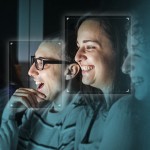It’s good stuff. Anderson includes some wonderful stories about how video is fueling innovation in fields as diverse as dance and community development.
But Anderson’s points about video also got me thinking about the definition of “face-to-face” communication. People watch TEDTalks as much for the non-verbal information they contain as for the ideas, Anderson said. Most of the speakers’ ideas have already been expressed elsewhere, he said, but it is in the nonverbal portion of TEDTalks that there is “serious magic.” That magic occurs, it seems to me, between the speaker and his immediate audience. Would TEDTalks be as popular as they are without TED conferences?
Reading and writing are actually relatively recent inventions. Face-to-face communication has been fine-tuned by millions of years of evolution. That’s what’s made it into this mysterious, powerful thing it is. Someone speaks, there’s resonance in all these receiving brains, the whole group acts together … What Gutenberg did for writing, online video can now do for face-to-face communication. So, that primal medium, which your brain is exquisitely wired for … that just went global.
Anderson didn’t specifically address this, but it seems to me that his remarks make a powerful argument for hybrid meetings, where speakers interact with live audiences as well as with virtual ones. I get a more connected feeling when I see video of a speaker addressing a live audience than I do when I see a lone speaker talking to the camera, even if the speaker is addressing me, the virtual audience.
What do you think? Do you feel the same way?



